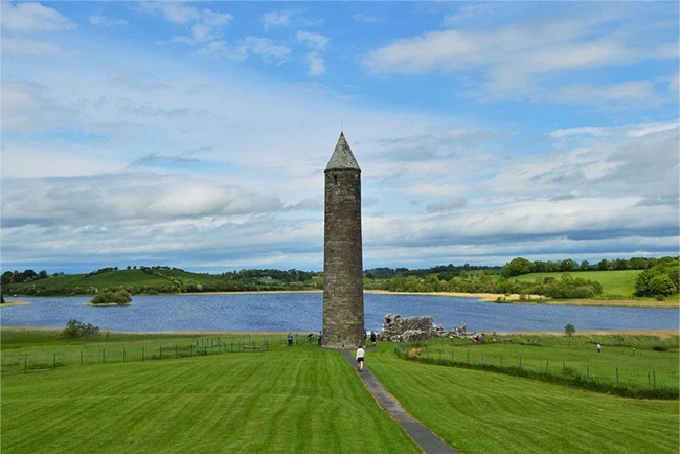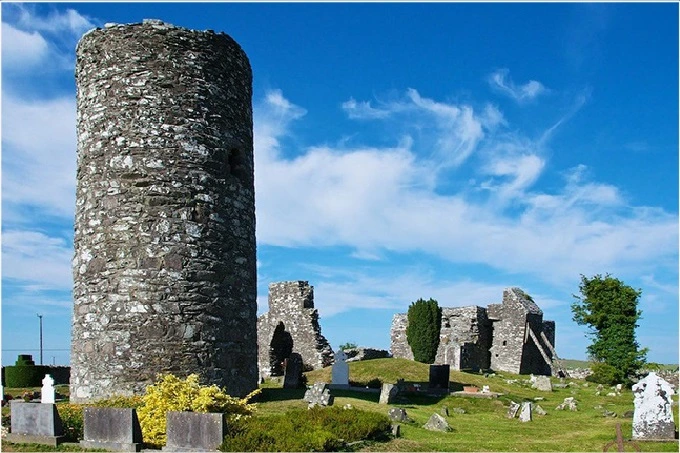What secrets of history are kept by the famous round towers of Ireland

Freestanding round towers are a striking feature of the landscape found throughout Ireland. Stone was used to construct each of these structures somewhere between the 9th and 12th centuries. In those far-off ages, this construction was difficult and time-consuming, and it demanded a high level of expertise. The presence of a tower was taken to signify one’s prestige, power, and money. What is the purpose of these one-of-a-kind structures, and why did the king finance their construction?
Round stone towers – a visiting card of Ireland

They are referred to as Cloigteach by the locals, which translates to “bell.” Because Celtic churches were located in close proximity to each tower, this particular situation lends itself well to the name. Historians believe that they functioned as bell towers in the past. They were put to use for a variety of other beneficial applications as well. For instance, one could hide there when hostile forces were attacking.
Stone and mortar were used in the construction of these ancient buildings. This kind of architecture required a significant financial investment in addition to specific expertise. Stone wasn’t always used in the construction of churches. It shouldn’t come as a surprise that all of the funding for these kinds of buildings came from the treasury of the royal family. The towers were constructed so everyone in the surrounding area could see the power and wealth held by the royal.
How the towers were built

The round towers’ height ranged from two to four dozen meters on average. When viewed from below, they had a highly solid basis in the form of powerful masonry, which contained earth that was poured inside it. The standard height for a door to be installed was between two and three meters. A ladder was placed to get access to the tower; however, once it was used as a shelter, the ladder was taken down. In those days, Viking raids on these territories occurred quite frequently, and local outlaws occasionally carried out their attacks. In addition, the foundation would be weakened if any doors or windows were located at the bottom.
Within the towers, there wasn’t much complexity to be found. The wooden steps led up to flooring made of planks of wood, which connected each level. Stone was cut away to create openings for the windows. They were positioned at an incredible height. Once more, this is for protection. Conical tops are characteristic of older buildings, which their age can identify. Those that were constructed at a later date have a ring of battlements atop their roofs.
Alternative versions

Historians are of the opinion that the Irish round towers were originally a component of monasteries or churches when they were constructed. In this regard, there is no absolute certainty. Some researchers disagree with this point of view and have other interpretations that are fascinating. Henry O’Brien, for example, claimed in 1832 that these structures were the legacy of a Buddhist cult that had its beginnings in the narrative of St. Patrick. He believed this cult had existed since the time of St. Patrick. According to the historians of Ireland, this is a reasonably implausible interpretation.

Another historian, writing one hundred years earlier, asserted that Danish Vikings constructed these towers at the time of their arrival in Ireland. Nevertheless, it is quite evident that the same time range no longer applies. Long before the northern invaders arrived, the first round of towers began to develop in this location. The towers are thought to have been constructed for hermit monks to live in. They couldn’t be bothered by anyone in this location. It is not quite clear where these constructions came from in the beginning. No one can say for certain when the first tower was built, nor can they explain why this particular architectural form is so common only in Ireland. These constructions are one of the interesting examples of artificial architecture in Ireland. They are unique.
Approximately six dozen of these religious structures have been preserved so far. Historians believe that at one point in time, their population numbered more than 120The majority of the towers have fallen into disrepair. There are slightly fewer than two dozen that are in excellent condition despite their age.




